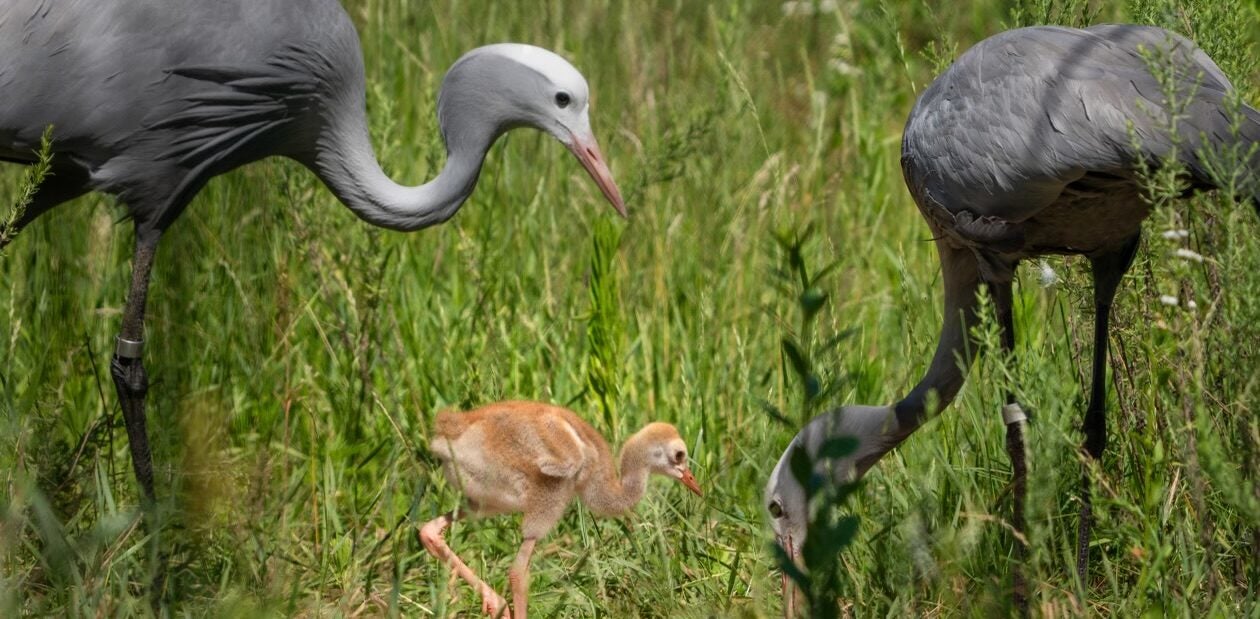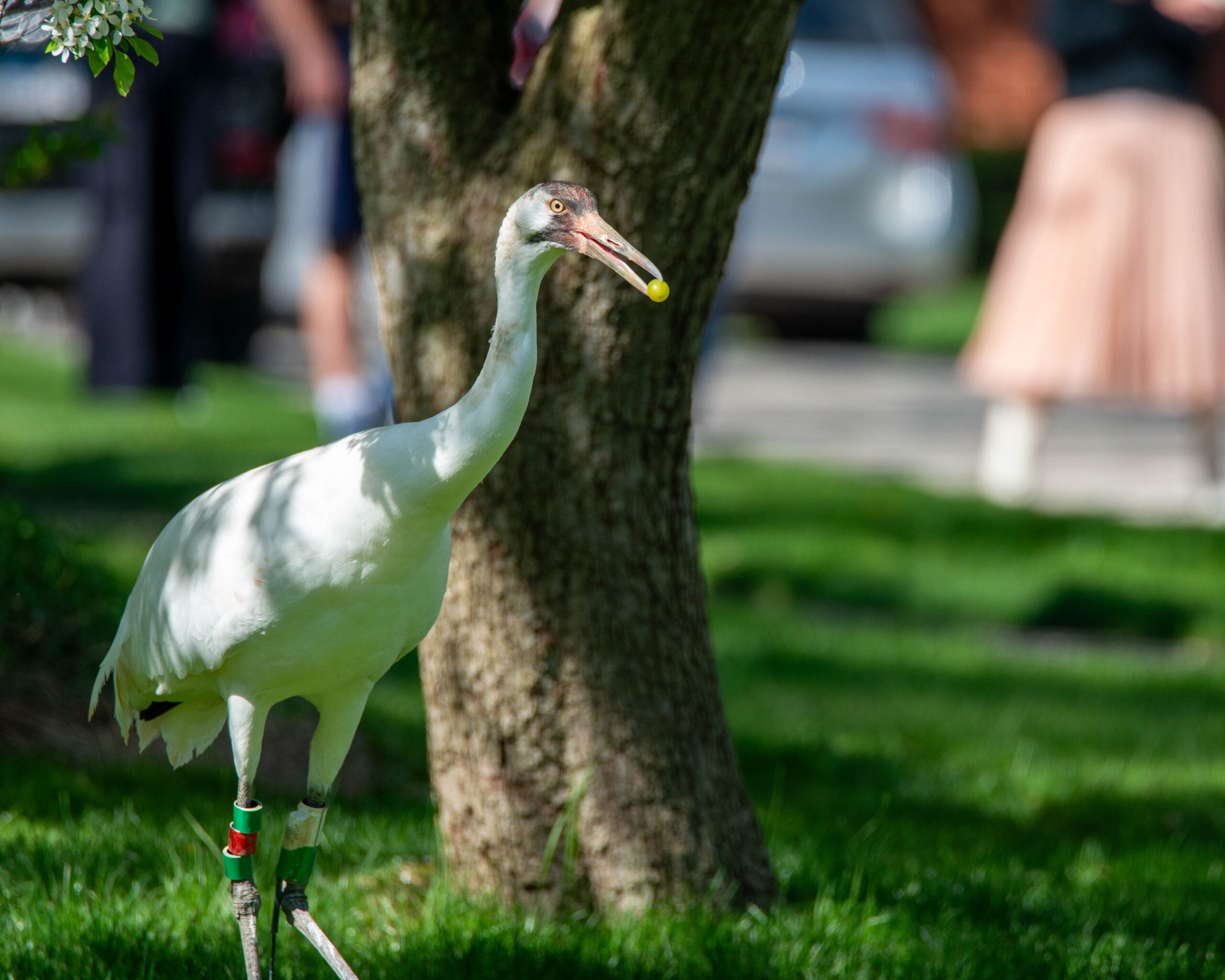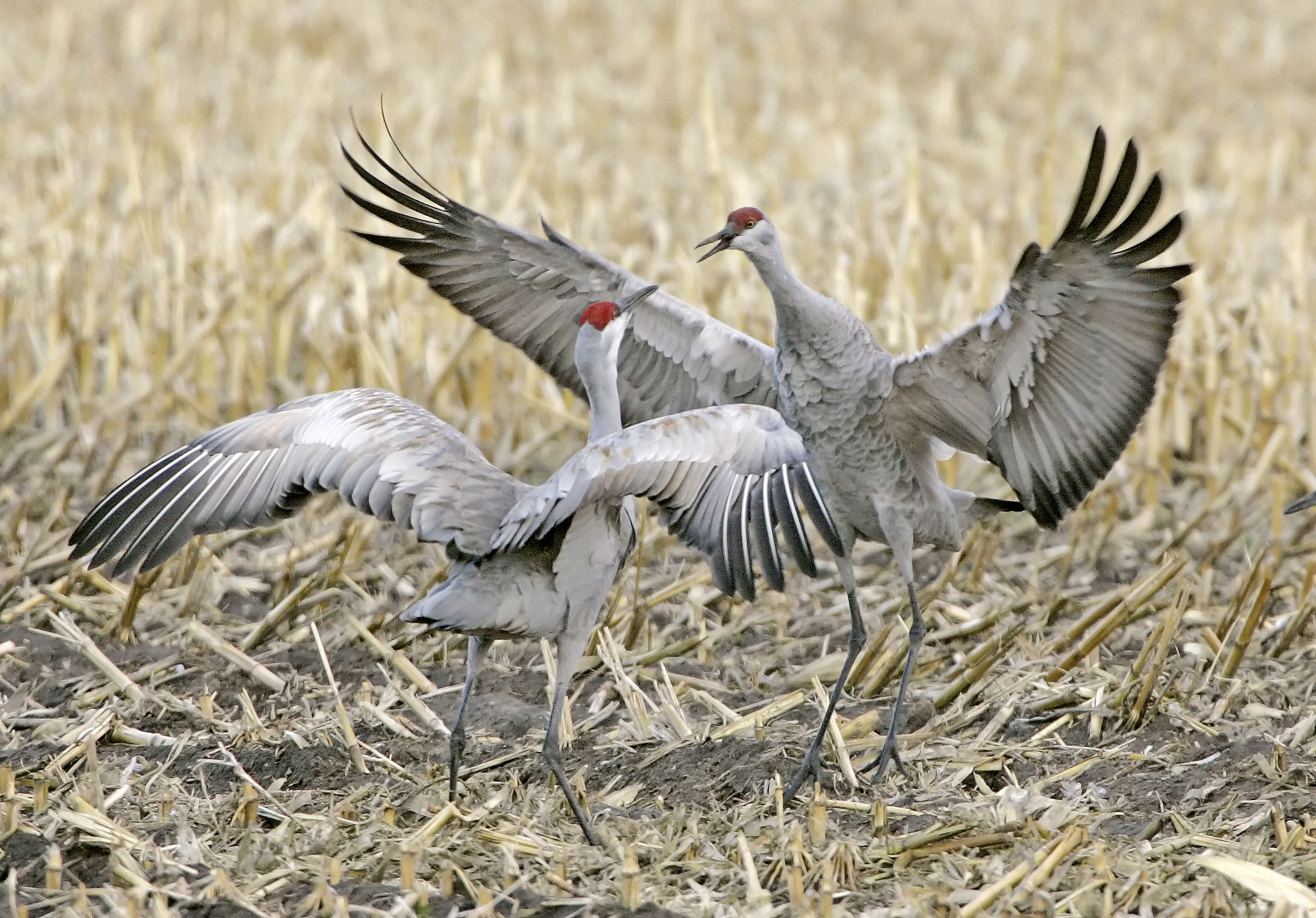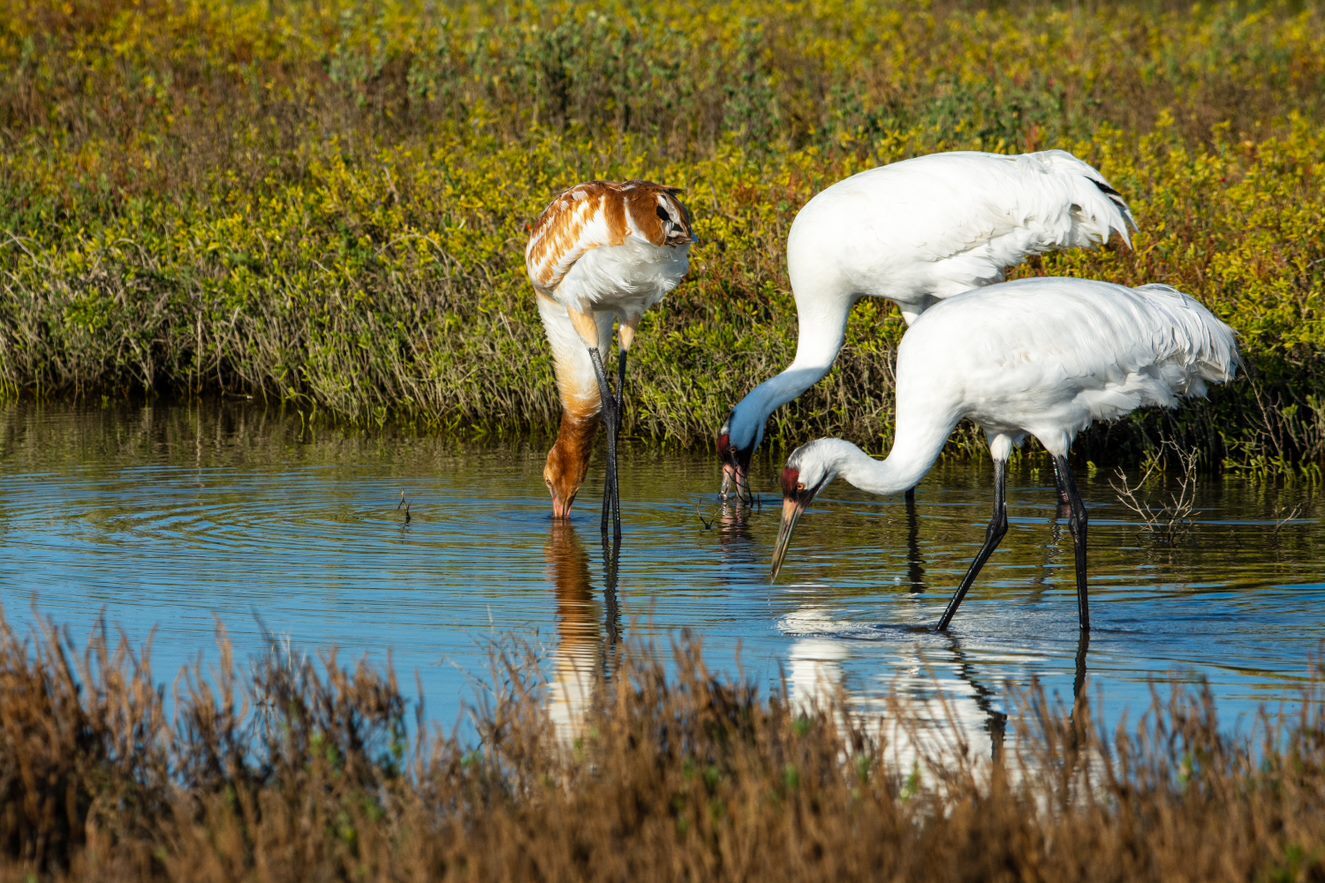A whooping crane rehabilitation experiment in central Wisconsin is hoping for better success with crane chicks that have been able to spend a lot of time with their parents, instead of having being raised almost exclusively by humans.
For about 13 years, most of the young birds in the effort to create a migrating flock of whooping cranes in the eastern U.S. were brought to Wisconsin from the Patuxent Wildlife Research Center in Maryland. The chicks had little interaction with their parents, and were instead raised by humans wearing crane costumes.
This year, four chicks that spent three months with their parents in Maryland are now part of the flock that’s getting ready to fly south from the Necedah National Wildlife Refuge.
Stay informed on the latest news
Sign up for WPR’s email newsletter.
Patuxent research manager John French said the parent-raised whoopers learn from their parents how to eat, drink, react to predators and get more exercise.
“They run around in the pen following their parents all day long,” said French. “We can’t provide that exercise as human handlers.”
French, however, said that two of the four parent-raised whoopers brought to Necedah last year died before leaving Wisconsin. He said the parent experiment will nevertheless continue for a few more years as scientists look for ways to eventually boost reproduction of the birds in the wild.
Wisconsin Public Radio, © Copyright 2024, Board of Regents of the University of Wisconsin System and Wisconsin Educational Communications Board.




